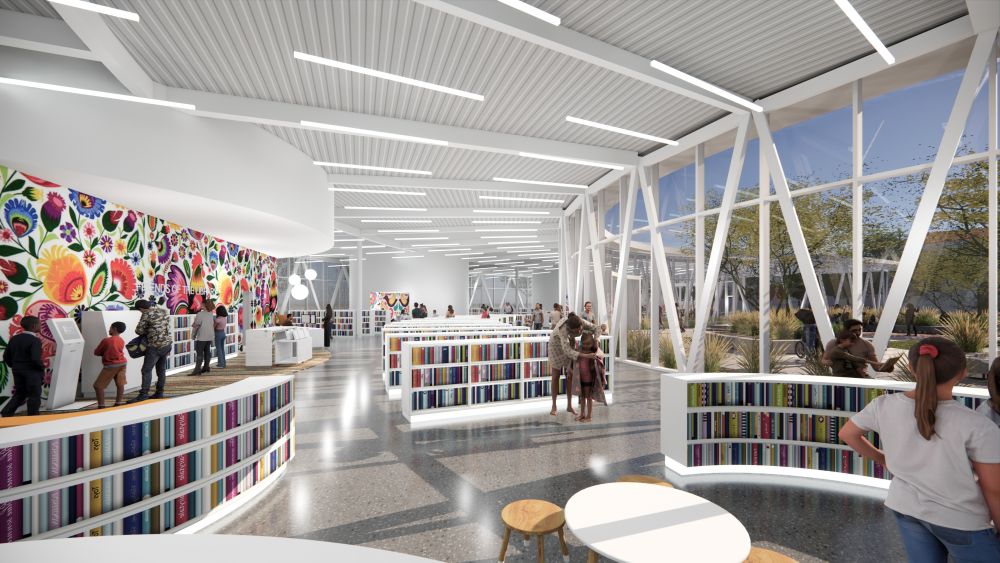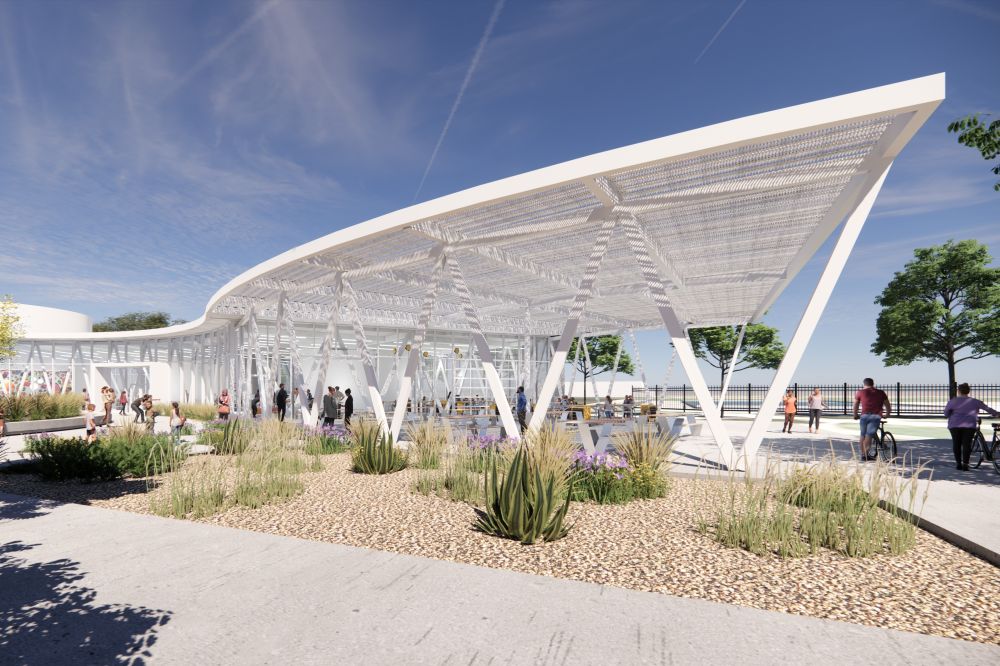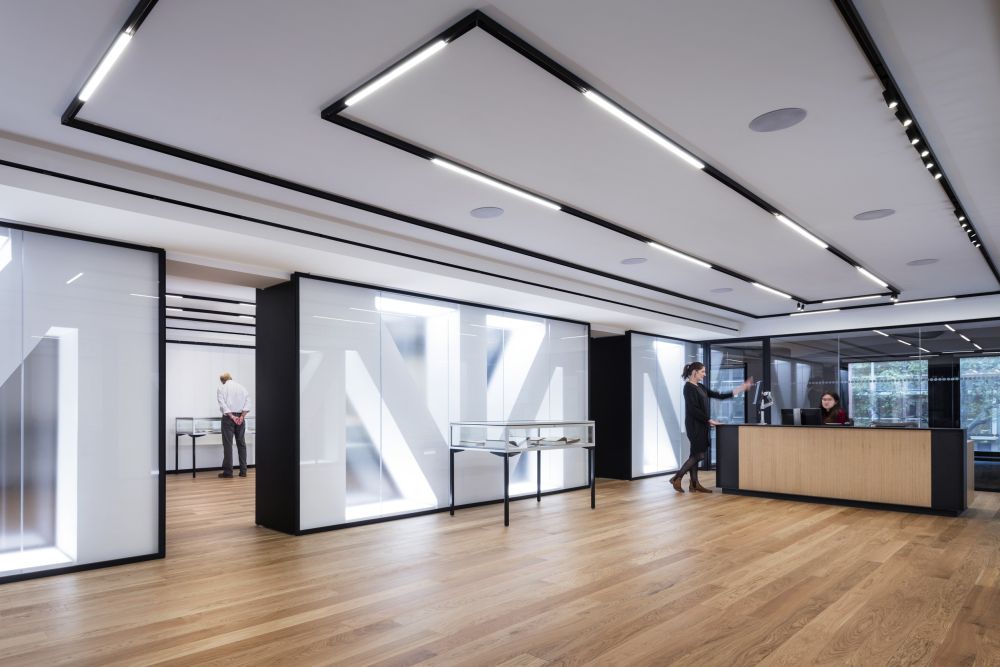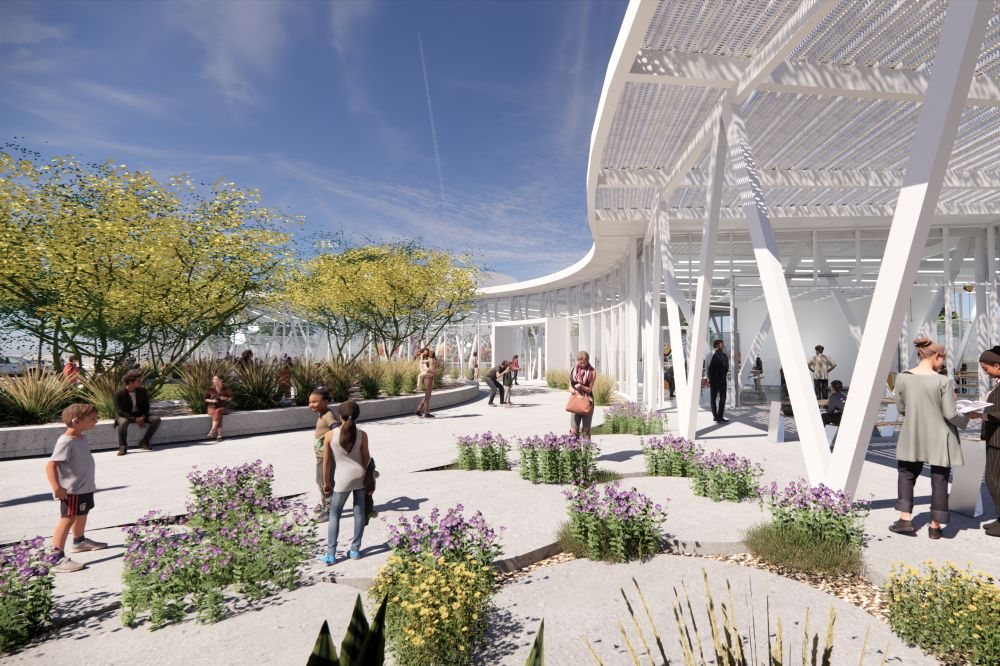Turning the page: Rethinking public library design to better serve the community
Libraries have long been known as places to store books, but today, they're evolving into dynamic hubs for community enrichment. From their physical layouts to the immersive experiences they offer, public library design is transforming to foster community engagement, encourage cultural exploration, and contribute to neighborhood revitalization.
While many of us were introduced to the library as a treasury of books or a quiet place to study, its role has evolved significantly. While those traditional purposes remain relevant, the library now serves a broader function. Today, the public library plays a vital role in fostering our well-being, facilitating connections with others, and promoting prosperity within our communities.
For those of us who design libraries, the repositioning of the library as a multi-dimensional resource requires us to rethink our design approach. It challenges us to consider the increasing value of libraries as the heart of civic vitality and how design can support the needs and behaviors of their populations. With the right mix of vision and program, design can transform the library into a gathering spot for the community and a space where everyone belongs.
Pavilions for the community
Public libraries serve as pavilions for the community, where individuals feel supported, included and connected to resources, knowledge and each other. Here are a few of the ways we design for this.
Feel included
Libraries serve a population that spans age, culture, ability and everything in between. This means they can be masterful examples of equitable and inclusive design. Whether it’s getting to the building via public transportation, flowing between interior spaces or engaging with other users, libraries should be accessible, safe, welcoming and resourceful for all.
Creating comfortable transitional spaces between the interior and exterior sets a calming tone, while wayfinding signals reduce the stress some may feel entering a large unfamiliar space. An open floor plan with unobstructed sightlines and transparency across the building gives a sense of community, interconnectivity and belonging. Spaces that offer varying levels of privacy empower each person to map their own journey through the library.
Feel supported
While support services have always been integral to the library experience, design is helping to advance the idea that library services can be delivered in new ways. Instead of requiring guests to visit a traditional circulation desk to learn about available services, libraries are adopting a model that minimizes the physical help desk and places librarians on the floor. This de-centralized layout encourages organic interactions and allows each person to receive support in spaces most comfortable to them. It’s one of the most recognizable shifts that leans on architectural design to create more personable experiences within the library.
This design trend also supports a rethink of the staff structure itself. Librarians have long been the go-to resources for information on everything from literature to digital technology to local public services. However, some libraries, such as those in the St. Louis Public Library system, are expanding their roles by incorporating social support services. These libraries are helping patrons access essential resources and connecting them with community service providers. Some libraries have dedicated social workers on staff, while others collaborate with social work colleges to offer these services.
Feel connected
Gathering spaces — both inside and outside the library building — have become vitally important to strengthening the sense of community. With a growing list of services and resources, libraries are becoming more socially inclusive spaces for community members and lifelong learners to gather and discuss community issues, learn about local initiatives and simply socialize. It is important that we provide a range of spaces, both interior and exterior, to help facilitate these exchanges.
When we view the public library as a pavilion for the community's collective celebration, learning, growth, health, and wellness, we're empowered to design spaces that embody the spirit of the people, fostering a sense of comfort and welcome for individuals from all backgrounds.
Catalysts for community vibrancy and economic development
There’s a blurry line between preserving the library’s square footage for traditional functions and reprogramming it to deliver a modern experience. Books, retail locations, digital tools, lounge space — how do we quell the tension between how space inside the library is used?
One approach is to think about the library in the context of its surroundings rather than a building that must be stuffed with amenities. It’s a strategy driven by the neighborhood’s economic potential, allowing the building to drive culture and catalyze change beyond the value of its internal assets.
For example, our team recently completed three libraries for the County of Riverside, CA, each powering their communities in different ways. The new library in Desert Hot Springs delivered immediate value as a community attraction, replacing a 3,000-sf rental space that functioned as the city’s only library. In the more established community of Menifee, the county placed a new library on a large lot with the vision of developing the remaining space for restaurant and retail locations. A similar strategy was executed in French Valley, where the new library is expected to spark fresh activity close to the local airport. In each case, the library was designed to be a local catalyst.
On the northwest side of the County of Riverside, the new SPC Jesus S. Duran Eastside Library is designed to help transform an underserved community. It’s located next to the prominent and historic Cesar Chavez Community Center, a community pool and neighborhood sports field, completing a civic ensemble of spaces at the heart of the community. The entities operate in conjunction with each other, creating a vibrant hub that energizes the culturally diverse neighborhood.
The underlying value of the SPC Jesus S. Duran Eastside Library project is that architecture and design can be a community builder that influences behaviors and outcomes for lasting impact.
And the strategy isn’t limited to new construction. On the East Coast, our team is leading the renovation projects for three of the New York Public Library Carnegie branches: 125th Street, Fort Washington and Port Richmond. With renovations such as updating dedicated areas for children, teens and adults as well as introducing new multi-purpose rooms for a variety of programs and classes, the buildings are designed to spark renewed energy that is truly in and of their communities.
Leveraging the power of partnership
Just as you often see with any design project, funding is a driving factor in when, where and how civic libraries developed. In traditional models, libraries are typically funded directly through the local government budget. With a large portion of that funding sourced through local property taxes and budget appropriations, the amount of money available for public libraries fluctuates from year to year. Here in lies our opportunity to approach library funding through a different lens.
The previously mentioned library projects in the County of Riverside were funded through public-private partnerships, “P3” for short. This type of funding model is more common for typologies that have an embedded revenue stream, but it’s an approach that’s gaining traction in the public library market. And the reason is simple: the P3 structure delivers turnkey libraries for the local government without them having to pay the cost upfront.
Here’s how it works
The County of Riverside solicited a private developer to structure a design, build, finance, operate and maintain (DBFOM) contract. The developer assembled the design-build team, secured a financing partner and formulated a financing structure that allows the county to pay for the libraries over time. It’s a mechanism that resembles a low-interest, 30-year mortgage for a private residence. A big difference — and a major benefit of this funding model — is that a DBFOM bundles all development expenses and ongoing operating expenses into affordable monthly lease payments. After 30 years, the county will own the libraries outright.
While the structure may vary slightly, we’ve seen that funding public libraries through P3 contracts is a win for all stakeholders, especially for the community. These partnerships, built on a shared vision, proven success and trust, are helping to transform communities.
The good news is that libraries are here to stay, and their significance — as one of the few remaining truly public spaces in our communities — continues to grow. Their role as community hubs and social magnets will become even more prominent, with expanding programs to fill gaps left by other community resources. Design and architecture play a crucial role in shaping this future, ensuring that libraries evolve to meet the changing needs of their communities while remaining inviting and accessible to all.




















